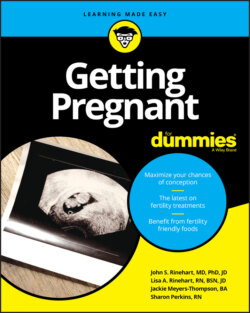Читать книгу Getting Pregnant For Dummies - Sharon Perkins - Страница 65
What are genes and chromosomes?
ОглавлениеGenes are a long string of four chemicals called nucleotides and lettered as A (adenine), C (cytosine), G (guanine), and T (thymine). Words in the code are made from just these four chemicals, and the alphabet has only four letters. That’s really a small alphabet to create a person. The English alphabet has 26 letters, and if you limit the number of syllables a word could have to 14, over 2.75963 x 107 words are possible. Fortunately for those spelling whizzes, the English language has only a little over 200,000 words.
The genetic code has only four letters, and the words (codons) can be only three letters long, so at most 64 possible combinations are used for the genetic code. The directions for building a human, the genetic code, is a string of three-letter words. However, the string is not one continuous string but rather 23 strings of code. These 23 separated strings are called chromosomes (see Figure 3-1). Each time a cell wants to divide, it must accurately create two copies of the genetic code, and it does this one word (codon) at a time.
To complicate this even further, a person inherits one set of chromosomes from each parent so that each cell has two copies of each chromosome. Thus, inheritance is a demanding task of accurately repeating the copying of the code over and over to create the 37 trillion or so cells that make a human.
